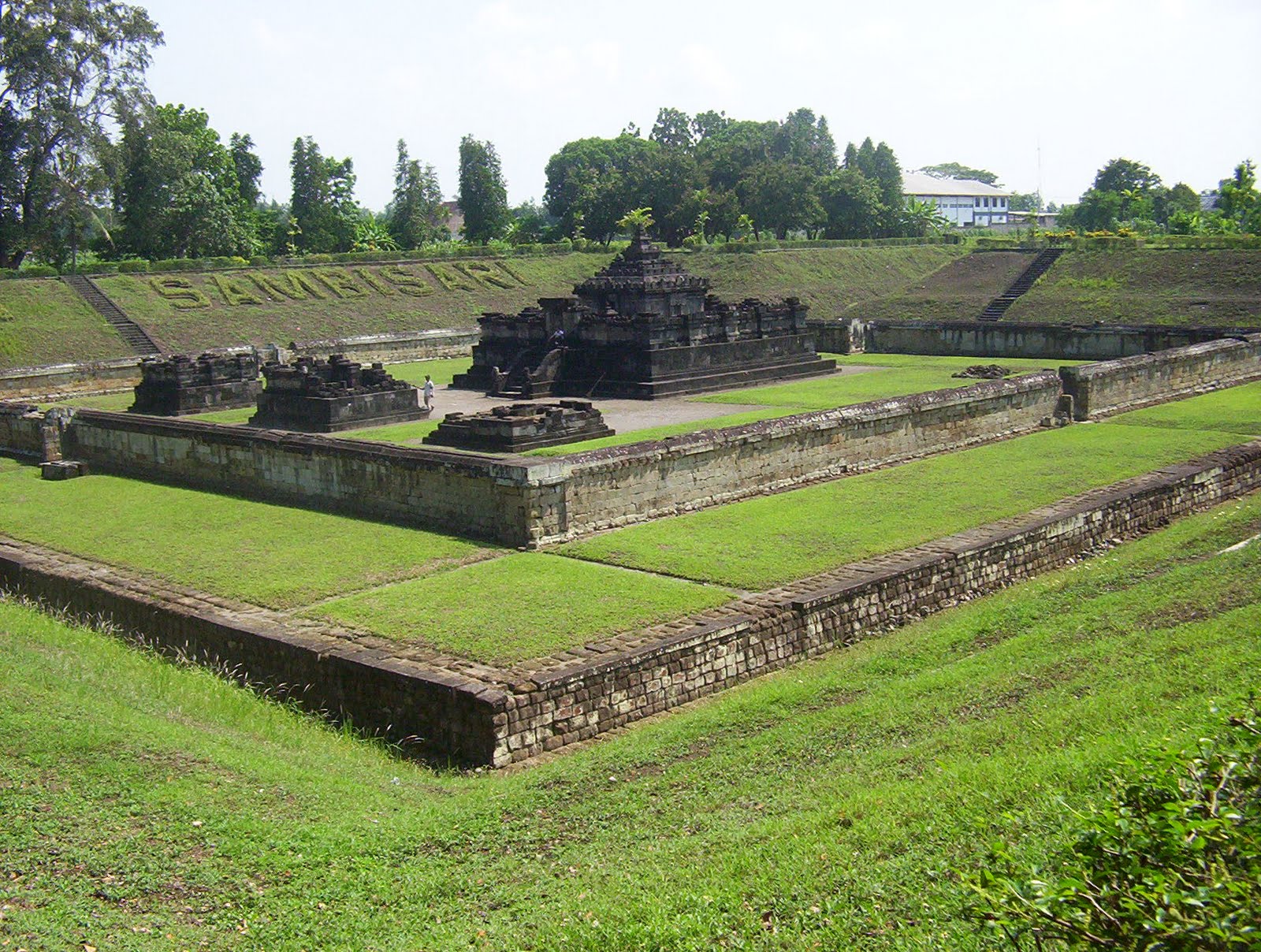Sambisari
The discovery of Sambisari temple probably was the most exciting archaeological findings in Yogyakarta in recent years, leading to speculation about whether there are other ancient temples still underground in the vicinity, buried under Mount Merapi volcanic ash.
Based on the architecture style and ornaments of the building that resembles those on Prambanan, the findings of Hindu statues around the temple walls, and the lingga-yoni inside the main temple; historians concluded that Sambisari was a Shivaite Hindu temple built around 1st or 2nd decade of 9th century. This conclusion was supported by the findings of gold plate in vicinity engraved with letters that according to paleography was used in early 9th century ancient Java.
According to Wanua Tengah inscription III dated 908 that contains the name of kings that ruled Mataram Kingdom, the temple was probably built during the reign of Rakai Garung. However, historians also consider that the construction of a temple wasn't always issued by a king. Lesser nobles might have also ordered and funded the construction.
Visitors must descend the flight of stairs on western side to reach the central part of the temple that is located 6.5 meters lower than the current ground level.
The outer part are 8 meter wide terraces. Recent excavations revealed the outer layer of walls surrounding the temple, which cover a wider area. Only the north-eastern part of this outer wall was excavated, the rest still is buried underground.
The Sambisari complex was surrounded by rectangular wall made from white stone measured 50 meters x 48 meters. In this main yard, there are eight small lingga, four located at the cardinal points and four others in the corners.
The Sambisari temple complex consisted of a main temple and a row of three smaller pervara temples in front of it. The center pervara temple measures 4.9 x 4.80 meters, while northern and southern pervara temple measures 4.80 x 4.80 meters each. Each of these lesser temples has no stone body and roof, and only consists of base part and balustrades.
The main temple is facing west and took form of a square with size 13.65 meters x 13.65 meters. The temple has no real base part, so the sub-basement part also serves as the base part. The siar is adorned with makara supported by dwarf (gana). There is no Kala carving on top of the main gate. By ascending the stair the visitor reach the rectangular 2.5 meters wide gallery with balustrades surrounds the main temple.
On this gallery founds 12 umpak, 8 bases took round shape and 4 others are square ones. This stone bases probably used to support wooden pillars, suggesting that the main temple used to be covered by a roof structure made from organic materials that now are already decayed and gone.
The body of the main temple measures 5 x 5 meters and 2.5 meters high. Around the temple walls are niches contains statues of Hindu gods, adorned with Kala's head on top of it. In northern niche are founds Durga statue, Ganesha statue in eastern niche, and Agastya statue in southern niche. The portal to the main room is on the western side. The entrance is flanked by niches that usually contains guardian statue of Mahakala and Nandisvara, however there is no statue founds in this front niches today. Inside the temple reside a yoni, measured 1.34 x 1.34 meters and 1.18 meters high. On north side of the yoni founds water spout supported by NÄga serpent. On top of yoni stucked the lingga measures 0.29 x 0.29 meters base and 0.85 meters high.
Related Sites for Sambisari
- Candi Sambisari - Yogyakarta - Indonesia - Asia for Visitors read Sambisari
- Sambisari - Interest | Facebook read Sambisari
- Sambisari, DI Yogyakarta Indonesia Tourist Information read Sambisari
- Sambisari Indonesia Tourist Information - Travelers Social Network ... read Sambisari


No comments:
Post a Comment